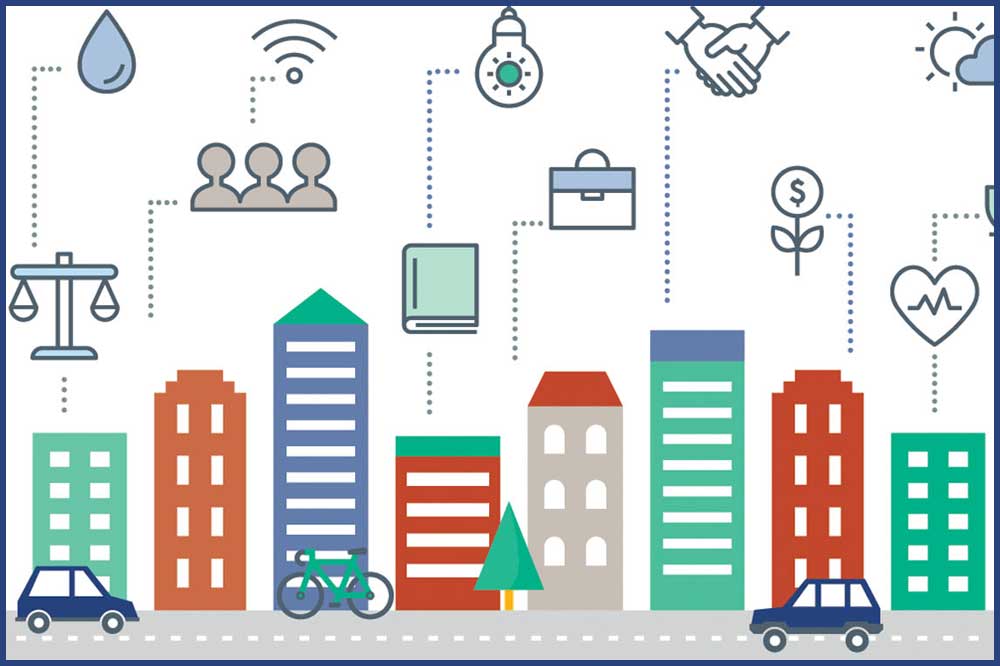
By Jessica Johnston
Many smart technologies may seem like they belong to a distant future, while others have become practically necessary overnight. Navigating the needs of individual communities will require local government leaders to be open to new and innovative solutions from unconventional partners, oftentimes outside of their organizations or even jurisdictions. A new report from ICMA and Siemens, “Putting Smart Community Strategies to Work in Small and Midsize Jurisdictions,” offers several strategies worth considering (icma.org/smart-community-strategies).
1. Discuss the vision and value of your community.
Communities that have the support of elected officials, staff, and community members already have the first building block in place to implement smart solutions. Having discussions about a vision for the future, along with what residents and stakeholders value, will allow technology to play a supportive versus leading role in creating smart solutions. Incorporating technology solutions into broader planning and performance expectations will help staff and community members see that technology provides a path to providing better services and more livable communities.
2. Determine if your IT infrastructure can handle the data that comes with smart technology solutions.
Having more data undoubtedly drives more informed management decisions, and even provides a level of predictability, through data analytics, that was not available to most communities in the past. However, technology solutions require end-to-end considerations to ensure that resources are in place to handle large amounts of data. Body-worn cameras provide a timely example. Many jurisdictions implemented body-worn camera programs, but then didn’t have the storage space or technical capacity to deal with collection and analysis of the data.
Security is another key component. Understanding public records laws in a particular jurisdiction is important to understanding how collected data is classified. Is the data a public record? Does it contain sensitive information about individuals that needs to be secured? Are there federal Homeland Security implications? These are all questions that will need to inform the security of data as well as the physical IT assets within a jurisdiction.
3. Decide if human resources needs will shift because of smart technology implementation.
As more functions become automated, it will be important to understand how employees who previously handled monitoring or maintenance functions might be impacted. In the case of Lakeland, Florida, staff who previously performed manual reading of water levels were easily retrained to use the application associated with new sensors. On the other hand, Bellevue, Washington, has used natural workforce attrition as an opportunity to reconsider the type of FTE required to meet the community’s future needs.
4. Identify who your critical partners are and the status of those relationships.
In every example, partnerships both within and outside of the municipality were critical to the success of smart community projects. Cross-departmental collaboration was fundamental in every case, and while it was informal in some communities and formalized through working groups or innovation teams in others, leadership must support a culture for those relationships to occur.
Community partners are the connection between smart technology solutions and economic growth. The vast majority of small and midsize communities will not be able to make the technology and infrastructure investments they need to be successful in the future by themselves. Bringing neighboring jurisdictions, academic institutions, private sector businesses, and community groups to the table to co-create solutions can lead to co-financing, laying the groundwork to attract the next generation of residents excited by the community’s potential.

New, Reduced Membership Dues
A new, reduced dues rate is available for CAOs/ACAOs, along with additional discounts for those in smaller communities, has been implemented. Learn more and be sure to join or renew today!
